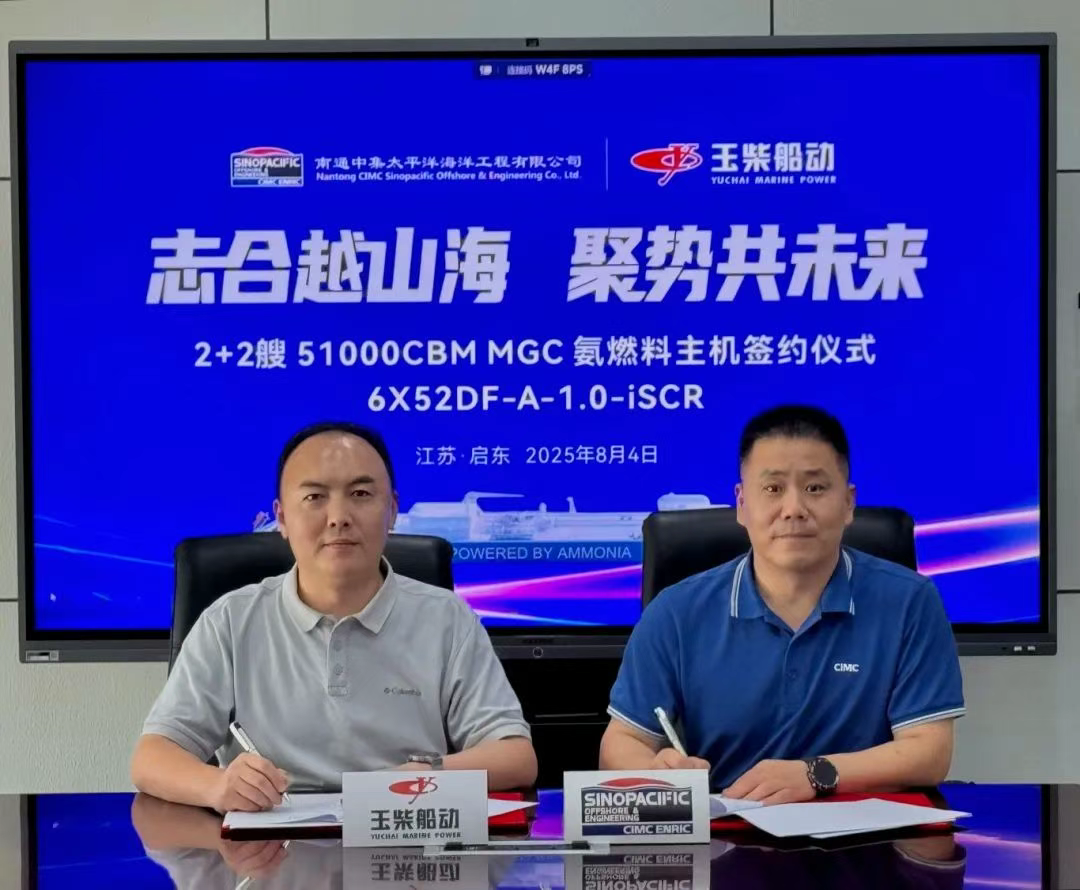On August 4, Nantong CIMC Sinopacific Offshore & Engineering Co., Ltd (CIMC SOE) and Yu Chai Marine Power Co., LTD. (YMP) held a signing ceremony in Qidong for the construction contract of 2+2 51,000 cubic meter ammonia dual-fuel medium-sized LPG/liquid ammonia carriers 6X52DF-A-1.0-iSCR ammonia dual-fuel main engines.

The collaboration between CIMC SOE and YMP began in 2019, when YMP supplied two RT-flex50DF low-pressure, low-speed LNG dual-fuel engines for CIMC SOE’s 20,000 cubic meter LNG bunkering vessel, then the world’s largest. Since then, the two parties have maintained close cooperation, with CIMC SOE continuing to select 13 X52DF series LNG dual-fuel engines from YMP for its 20,000 cubic meter LNG transport and bunkering vessels. With the newly signed 2+2 6X52DF-A-1.0-iSCR ammonia dual-fuel engines, CIMC SOE has selected a total of 17 YMP dual-fuel engines, making it one of YMP’s most important dual-fuel engine customers.
CIMC SOE boasts world-class design and construction capabilities for small and medium-sized liquefied gas transport and bunkering vessels, a market leader. The newly signed contract for two 51,000 cubic meter dual-fuel LPG/liquid ammonia carriers represents the world’s largest medium-sized gas carriers. They are also the world’s first fully ammonia-powered medium-sized gas carriers with a capacity exceeding 51,000 cubic meters, representing a key development direction for green shipping.
Since delivering the world’s first low-pressure, low-speed dual-fuel main engine, the 5RT-flex50DF, in 2015, YMP has continued to deepen its efforts in the field of dual-fuel main engines. By the end of 2025, with the completion and commissioning of the ammonia fuel supply station, YMP will become the first low-speed engine manufacturer in China capable of producing and delivering three types of low-speed dual-fuel engines—powered by natural gas, methanol and liquid ammonia.
Both parties expressed that they will take this signing as a new opportunity to further consolidate the foundation of strategic cooperation, jointly promote the development of green ships, and provide a practical and feasible practical path for the low-carbon transformation of the global shipping industry.


